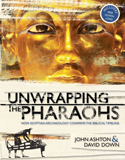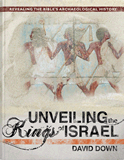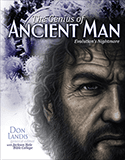Getting Archaeology Right at Ai
For decades secular archaeologists have dismissed the Bible’s account of Joshua’s battle at Ai. It bears little resemblance to the terrain at et-Tell. But what if they’re looking in the wrong place?

Joshua’s conquest of Jericho is one of the most exciting and popular accounts in all the Old Testament (Joshua 6). The events over the next few weeks, however, are less well-known and often overlooked. But the conquest of the Canaanite fortress (or city) of Ai, recounted in Joshua 7–8, remains of great importance in the history of God’s dealing with His people.1
Like so many other amazing events described in Scripture, the historical accuracy of this one is also under attack. Fortunately, God’s Word gives us light to reevaluate the archaeological evidence.
Sin in the Camp
After Israel’s victory at Jericho, Achan secretly took some of the “devoted things”
(Joshua 7:1, NIV). His foolish sin against God’s direct command brought divine judgment on Israel, which suffered a major defeat at the hands of Ai’s king (Joshua 7:2–5). After Achan’s sin was discovered and punished, the Lord sent the Israelites out to battle once again. This time, they won a great victory.
The Bible gives some fascinating details about the countryside and the strategy Joshua used. But since most modern biblical scholars and archaeologists refuse to accept God’s infallible Word as their starting point for interpreting the evidence, they reject the historicity of these events.
For many years, archaeologists excavated a site called “et-Tell,” which they claimed was the Ai of Joshua. The evidence from the site does not line up well with the Bible, so they concluded the biblical account was in error.2 The following assertion is fairly typical: “Archaeology has wiped out the historical credibility of the conquest of Ai as reported in Joshua 7–8.”3
Taking Another Look
Archaeological Discoveries Confirm the Biblical Account
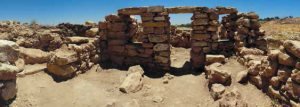
Archeaological site Maqatir, now thought to be the ancient city of Ai from Joshua 7–8

The hill to the north of Ai where Joshua’s army encamped is now called Jebel Abu Ammar. Ai’s city gate is in the foreground.
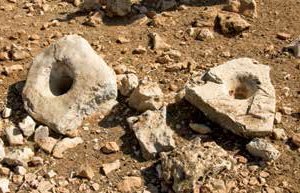
socket stones used for the gate

(left) pottery found that dates the site Miqatir to the time of Joshua
(right) remains of an infant inside a burial jar suggesting there were women at the site as is mentioned in the biblical account
Photos courtesy ABR
Any time scholars point to evidence that they claim contradicts Scripture, you can bank on one thing: the Bible is not in error. The problem has to lie elsewhere. There are always alternative interpretations. In this case, was it possible that they were just digging in the wrong place?
Over many years of careful archaeological, biblical, and historical investigation, the Associates for Biblical Research (ABR) discovered that these scholars had, indeed, made this colossal blunder!
Led by Dr. Bryant Wood, ABR identified an alternative site 9 miles (14.5 km) north of Jerusalem called Khirbet el-Maqatir.4 The geography fit the biblical account very well, and so ABR began archaeological excavations there in 1995.
The narrative of Joshua 7–8 provides us with numerous details, many of which ABR has been able to verify.5 After excavating for over ten seasons,6 they have revealed persuasive reasons to believe they have uncovered the lost city of Ai. And they believe the discovered evidence confirms the biblical account! Khirbet el-Maqatir fits every single requirement demanded by the biblical text. What follows here are a number of compelling reasons:
1. A hill north of Ai
Joshua’s army “encamped on the north side of Ai, with a valley between them and Ai. . . . So they stationed the forces, the main encampment that was north of the city and its rear guard west of the city
” (Joshua 8:11, 13). Due north of our site is a hill called Jebel Abu Ammar. It is the highest hill in the region and provides an excellent tactical position for military operations to be carried out.
2. A fortress gate facing north
When Joshua arrived at Ai with his army, he stood “in front of
” Ai on its north side (Joshua 8:11). The “front” of the city would be the wall with a gate. In 1995, ABR discovered remains of the gate on the north side of the city wall, fulfilling a very precise requirement for Ai. The ABR team also discovered socket stones, which held the doorposts of the gate in place.
3. A spot for the ambush forces to hide
Reading through the narrative of Joshua 7–8 carefully, we see that the Lord told Joshua to split up his army (Joshua 8:2). Joshua obeyed and set up an ambush force to the west (Joshua 8:9, 8:12). A candidate for Ai must have a viable location to prepare for attack but remain unseen. Due west of Maqatir is a very steep valley called the “Wadi Sheban.”7 This valley is close to Ai and steep enough to easily hide Joshua’s ambush force.
4. Archaeological evidence
Ai had to be occupied at the time of the Israelite entry into Canaan, in the late fifteenth century BC. The best way to verify such an occupation is to find pottery that can be dated to that same time period. ABR has discovered storage jars, jar rims, sling stones, and other artifacts similar to those from Joshua’s time.8 The west wall of the city has been uncovered and measures up to 12 feet (4 m) thick. Both the pottery near the wall and the size and style of the wall match the time period of Joshua well.
5. Women at Ai
Joshua 8:25 indicates that women lived in the area, despite the fact that women did not normally live at a military fortress. In 2009, our team discovered an infant burial near the gate. The child apparently died in childbirth or soon thereafter. He or she was placed in a pottery jar in what appears to be a ritual burial. The pottery has been dated to the time just before Joshua’s conquest, affirming that women were present at Ai.
6. Evidence of fire
Joshua indicates that the Israelites burned three cities in Canaan: Hazor, Jericho, and Ai (Joshua 8:18–19).9 At Maqatir, we have found evidence for fire in the form of ash layers, heated (calcined) bedrock, burned stones, and “refired pottery.” Pottery from this time period was typically baked in a kiln. When pottery is exposed to intense heat for a second time—as would occur if the city went up in flames—it becomes extremely hard, like concrete. The ABR team has found such “refired” pottery from Joshua’s time in large quantities throughout the site.
7. A Christian memorial?
The Byzantines (ca. AD 324–640) were famous for building churches and monasteries in places where they believed biblical events took place. On the top of the hill of Maqatir, there is a Byzantine monastery that was likely built to commemorate the momentous events of Joshua 7–8.10
8. Other evidences
The Bible provides us with numerous other requirements for a prospective site to be Ai. The city must also be (1) smaller than Gibeon (Joshua 10:2), (2) near Beth Aven (Joshua 7:2), (3) east of Bethel (Joshua 7:2), (4) near Bethel (Joshua 12:9), (5) a desolate place “to this day
” (Joshua 8:28), and (6) have a valley north of Ai shallow enough for the king of Ai to observe Joshua and his men (Joshua 8:13–14). All these criteria severely limit any possible candidate for Ai.11
These exciting geographical and archaeological discoveries affirm what the serious Christian already knows: the Bible can be trusted in every detail it records because it is the Word of the living God. We rejoice that He, in His sovereign providence, has allowed these ancient remains to be discovered and confirm the inerrant and infallible revelation of the incorruptible “I AM.”
ABR continues to excavate each year at Maqatir, uncovering more evidence as the Lord wills. Volunteers are welcome to join the excavations, and no experience is required. Visit www. Maqatir.com for details on how you can have a once-in-a-lifetime experience in Israel!
Answers Magazine
July – September 2013
To say that the human brain is more amazing than a computer misses the point. We now know that it’s nothing like a computer— and far more powerful! In this issue of Answers you’ll learn why a computer will never match the human brain. Also, discover why the big bang is a theory in crisis, what the Bible says about women in combat, and much more!
Browse Issue SubscribeFootnotes
- English Bibles call Ai a “city.” The English term can be misleading because of our modern usage. The Hebrew term, ‘îr, עִיר has a very wide range of meaning, so “fortress” is applicable and fits the biblical and archaeological context well.
- Et-Tell means “the ruin.” This site was abandoned just before the time of Abraham and was unoccupied at the time of Joshua. It was probably the “Ai” recorded in Genesis 12:8, so in some ways, the error itself was understandable. The transferring of the name “Ai” to Khirbet el-Maqatir would not be an unusual scenario, as it is only 6/10 miles west of et-Tell.
- Joseph A. Callaway, “Was My Excavation of Ai Worthwhile?” Biblical Archaeology Review 11 (1985): 68.
- This Arabic name is pronounced “Kir-bit” “El” “Mah-Kah-Tir.” A “khirbet” is typically a shallow site where bedrock is reached quickly during excavations. A “tell” is usually much deeper, with many layers of occupation, such as Tell Jericho.
- ABR’s extensive research, led by Dr. Bryant Wood, can be found at www.BibleArchaeology.org.
- ABR dug at Maqatir from 1995–2000 but because of political turmoil in Israel was unable to return again until 2009.
- A wadi is a dried-up channel or valley where a river or stream once ran.
- Extensive analysis of the pottery found at Maqatir is found in: Bryant G. Wood, “The Search for Joshua’s Ai” in Critical Issues in Early Israelite History, eds. Richard S. Hess, Gerald A. Klingbeil, and Paul J. Ray, Jr. (Winona Lake, Indiana: Eisenbrauns, 2008), pp. 205–240.
- Archaeological excavations at Hazor (Joshua 11:10–11) and Jericho (Joshua 6:21–24) have revealed evidence for massive destructions by fire, both of which can be dated to the time of Joshua. Douglas Petrovich, “The Dating of Hazor’s Destruction in Joshua 11 via Biblical, Archaeological, and Epigraphical Evidence,” Journal of the Evangelical Theological Society 51.3 (Sept. 2008): 489–512. Bryant G. Wood, “Did the Israelites Conquer Jericho? A New Look at the Archaeological Evidence,” Biblical Archaeology Review 16.2 (March/April 1990): 44–58.
- The monastery may instead commemorate Genesis 12:8, but we cannot be certain. “
From there [Abraham] moved to the hill country on the east of Bethel and pitched his tent, with Bethel on the west and Ai on the east. And there he built an altar to the Lord and called upon the name of the Lord
” (ESV). The “Ai” of Abraham’s day was probably et-Tell, as noted in footnote 2. - For extensive details, see http://www.biblearchaeology.org/file.axd?file=The+Search+for+Joshuas+Ai.pdf
Recommended Resources

Answers in Genesis is an apologetics ministry, dedicated to helping Christians defend their faith and proclaim the good news of Jesus Christ.
- Customer Service 800.778.3390
- © 2024 Answers in Genesis




